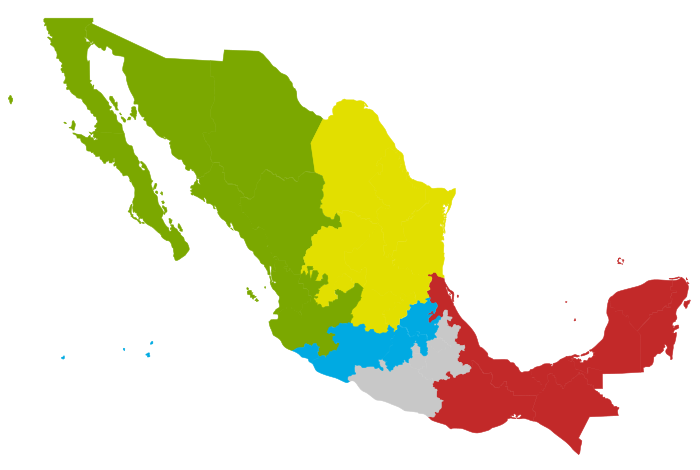Electoral regions of Mexico
The electoral regions of Mexico (circunscripciones electorales) are geographic areas composed of various states used for the election of the 200 proportional representation legislators to the Chamber of Deputies.
Each of the five regions sends 40 deputies, which are selected according to party lists in the regions.
The electoral regions are divided to ensure a roughly equal distribution of population among the regions and may be modified by the National Electoral Institute. The current distribution has been in use since September 30, 2005.
 Mexico divided into the five electoral regions | ||
| Region | Seat | States |
| First | Guadalajara, Jalisco | Baja California, Baja California Sur, Chihuahua, Durango, Jalisco, Nayarit, Sinaloa and Sonora |
| Second | Monterrey, Nuevo León | Aguascalientes, Coahuila, Guanajuato, Nuevo León, Querétaro, San Luis Potosí, Tamaulipas and Zacatecas |
| Third | Xalapa, Veracruz | Campeche, Chiapas, Oaxaca, Quintana Roo, Tabasco, Veracruz and Yucatán |
| Fourth | Mexico City | Mexico City, Guerrero, Morelos, Puebla and Tlaxcala |
| Fifth | Toluca, Estado de México | Colima, Hidalgo, Estado de México and Michoacán |
See also
- National Electoral Institute
- Chamber of Deputies (Mexico)
- Elections in Mexico
External links
- Electoral Regions on the INE website
This article is issued from Wikipedia. The text is licensed under Creative Commons - Attribution - Sharealike. Additional terms may apply for the media files.